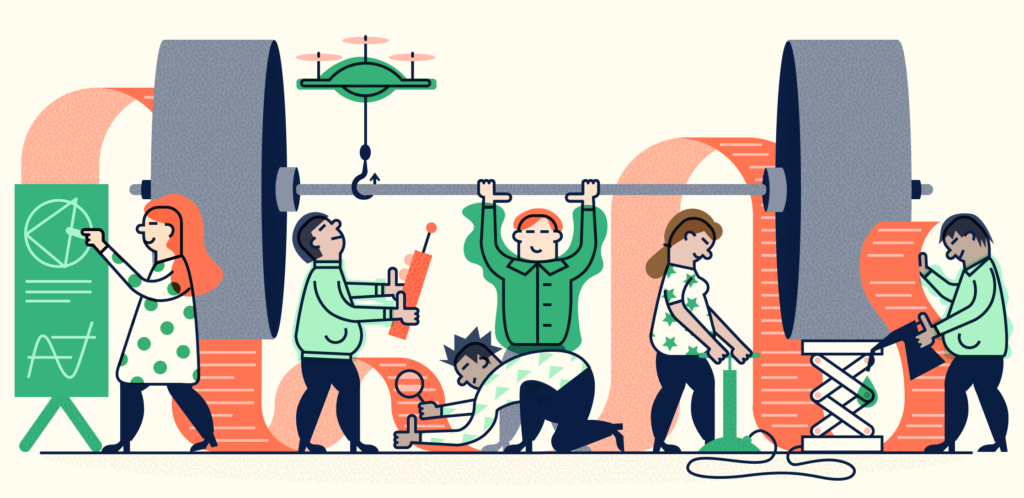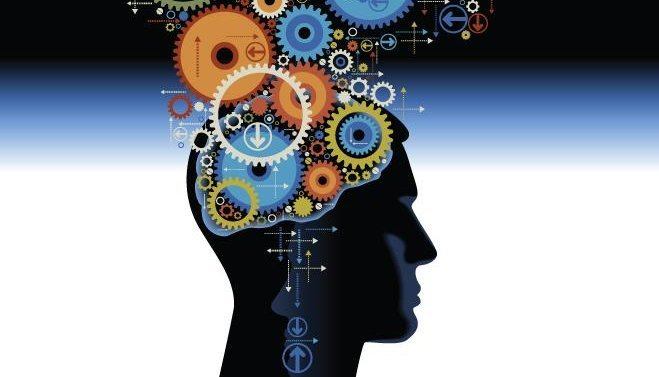This article will define the different types of mental models. It also examine their role in the decision-making of managers and organizations. Finally, we will discuss some practical and objective examples of mental models of famous companies around the world.
An Introduction to The Mental Models
Although mental models are intrinsically invisible, individuals can share them with others through special techniques. For example, when you need to describe the difference between a good teacher and a bad one, you can enumerate a set of characteristics that differentiate these two groups.
Psychologists call this kind of information “categorical knowledge,” as it is the knowledge that people use to distinguish between classes of people, objects, and other things such as a good teacher and a bad one.
Stock analysts also use categorical knowledge whenever they want to analyze companies’ stocks to recommend people to “buy,” “sell,” or “hold” stock.
Learn more: Difference Between Common Stock and Preferred Stock
Business executives also use this type of knowledge to distinguish their competitors from others.
Another type of mental model is “causality” that describes the relationship between cause and effect. People have causal beliefs about phenomena. For example, consider the famous proverb “Early to bed and early to rise, makes a man healthy, wealthy, and wise.” The proverb contains this causal commands:
if you go to bed early and wake up early, then you will become healthy, wealthy, and wise.
Like categorical knowledge, business executives have causal beliefs about a wide range of phenomena. For example, many executives believe that advertising leads to more revenue. Also, they may believe that R&D costs lead to innovative products or more efficient production processes.
Learn more: 12 Common Business Mistakes You Should Avoid
Changes in Managers’ Attitudes and Mental Models
Managers, like everyone else, have mental models of complex processes. A simple example of process models could be understanding how to replace a flat tire. An example in the field of business might be understanding the process of developing a new product or entering a new geographic market. As with all mental models discovered, categorical knowledge, causal beliefs and perceptions, and cognition of individuals or organizational processes may change over time.
For example, business executives seldom talked about quality two decades ago. Also a few quality stories used to appear in business publications. However, today, almost all top executives have realized the importance of quality. Most executives now have the scientific and practical belief that improving quality will have a significant positive impact on the mental image of a company’s products and services, leading to higher sales and market share.
Also, as people’s experiences increase over time, the knowledge gained from the processes can become significantly more complex. As managers gain experience in their companies, they develop complex perceptions of standard techniques, and operating procedures. This knowledge is specific to the company. It is an example of complex social resources that can contribute in meaningful ways to the development and maintenance of competitive advantage.

What Is a Mental Model?
The mental model is a pattern that simulates external facts in your conscious mind. To be conscious, you must be aware of the world around you and your relationship with it.
For example, when you look at a painting, the light photons enter your eyes. They stimulate nerve cells and make them send messages to the brain. The brain processes these signals and creates an image of the painting in your mind.
These biological processes are just a part of what help you understand the external reality of painting. In this part, we are dealing with visual information only.
So, what makes your mental image you perceive, as an actual painting that is just in front of you? This is where the mental model comes into play, and you start thinking about the painting.
The painting that you perceive is, in fact, a concept of its external reality. The concept of painting is a “model.” To understand this model, you need something much more than what you have seen. Your experience and knowledge help you to understand this model. Information such as:
The meaning of canvas and brush and their role in painting, as well as knowledge related to painting style, techniques, etc., are other pieces of puzzle that help you understand the meaning of your model. Mental models incorporate our knowledge and help us create new knowledge.
Mental Models and Strategic Decisions
We all have mental models of a range of phenomena. They may include people, hobbies and habits, music, how to do a particular sport, politics, religion, and business-related concepts. Furthermore, our minds can quickly construct new mental models when confronted with new or novel phenomena.
Since mental models are cognitive representations of the phenomena we encounter, they may be more or less complete.
For example, mental models can be complete in some individuals for some phenomena such as a hobby or favorite sport. However, For other poorly understood phenomena, mental models may involve superficial cognition. In the following, we will discuss how the accuracy and completeness of mental models can impact the quality of decision-making.
Mental models help us pay attention to some of the many stimuli we receive, then decide and take action. They play three key roles in the decision-making process.
- Help us focus our attention and determine which stimulus to concentrate on.
- They affect how we interpret information in relation to the stimuli we pay attention to.
- Finally, mental models determine how we act based on our interpretation of information.
Mental Models and Focusing
As mentioned, a key function of mental models is to refine information and help individuals focus attention. As an example, consider how we all read newspapers. We can read every piece of news, which may take several hours or a day or even more. However, most people skim over the newspaper, focusing on the information they are most interested in. Mental models are responsible for this “selective perception” or concentration.
Like everyone else, managers use mental models to refine the vast amount of information and stimuli they receive from interacting with their environments. Most business executives’ days are filled with meetings, phone calls, and reports that provide much more data than they can handle. Mental models help them focus on stimuli that are considered more critical and relevant. This helps them focus on aspects that they think are vital. However, other stimuli – including potentially more important ones- may be overlooked.
Mental Models and Interpreting Stimuli
Since mental models include our attitudes, beliefs, and cognitions, they also affect our responses to stimuli. Thus, in the case of stimuli that we focus on (for example, in the case of newspaper articles that we choose to read), mental models help us interpret and understand what we have encountered. For example, how does a business story relate to the macroeconomic environment? What implicit effects will that trade news have on stock prices in general or on the stock prices of a particular company? Similarly, executives limit the selection loop to specific stimuli and then determine what implications the impediment may have on their companies by processing and interpreting this data.
Managers Make Decisions Based on Mental Models.
Finally, beliefs and perceptions within mental models guide us in making decisions. After reading and interpreting a piece of news, we may decide to buy or sell shares of a specific company.
As another example, a business executive may read a marketing report and focus on a portion that reflects poor sales in a particular geographic location. The CEO may then interpret this information and conclude that the company needs to spend more on advertising in that area. This decision (spending more money on advertising in a particular region) will lead to a change in the company’s marketing strategy and will likely affect the company’s performance as well.
A change in performance, in turn, provides feedback for the CEO to make a different decision; If sales performance increases in that particular geographic area, the CEO’s mental model will be strengthened (in this case, a causal belief about the relationship between advertising and sales levels). The CEO will probably come to a more reasonable and strong belief that advertising is positively related to increased sales. You can widely and strongly observe this kind of learning (trial and error) in organizations. We will see that it may be challenging to change such beliefs once established.
Mental Models Effect on the Company Strategies
Managers’ mental models influence different types of decisions that are the basis of company strategies. They make a range of big and small decisions. Here, we focus on four of the most important decisions managers make, all of which have a profound impact on the position of their companies, human resources, and overall company performance. These decisions include the following:
1) Decisions on industry competition and business definition
2) Decisions about business level strategy
3) Decisions about organizational level strategy and diversification
4) Decisions about organizational structure
Many factors affect the company’s life expectancy and the company’s competitive advantage, including the macroeconomic environment and competitors within the industry. However, we expect a company’s position in the market, its resources and capabilities to impact largely on its performance.

The Mental Model of Southwest Airlines Executives
To illustrate the mental models in question, let us consider the case of Southwest Airlines. Compared to other senior executives in other airlines, Southwest leaders, including its former anti-norm CEO, Herb Kelleher, and its current CEO, Gary Kelly, have a unique mental model about the airline industry. Their models have a fundamental difference from most of the executives of other airlines. These completely different mental models have led to unique strategies. Southwest’s low-fare strategy, for example, has traditionally targeted passengers who travel by car instead of flying to their destination, a type of customer with a fundamental difference from most major airline target customers.
In addition, managerial decisions have led to very different business strategies. Southwest’s primary reliance is on the point-to-point system instead of other airlines’ costly (centralized) Hub-and-Spoke systems. Southwestern does not serve food and only uses Boeing 737 aircraft to minimize maintenance and additional costs.
Perhaps the most important reason for Southwest’s success is managerial decisions that have led to an innovative approach in organizing the company. Southwest avoids many of the union’s labor regulations that have crippled the performance of other airlines. Although Southwest is one of the most successful companies in the airline industry, it experiences minimal labor conflict with other commercial airlines.
Here you can see a part of Judy Hoffer Gittell book “The Way of the South and Seth Airlines” :
Creating a Special Place for the Brand
The South West executives’ respect for their employees and their elected representatives strengthened the front-line staff’s confidence in the company and increased their compliance with its goals. In addition, the respect shown by the top management to the team and the respectful relations between the unions contributed to the company’s success. In short, Southwest’s considerate and friendly relations with the unions seem to have built friendly and trusting relationships throughout the company.
The purpose of this example is to illustrate that managers’ mental models have a powerful influence on strategic management thinking, decisions, and strategies. Where does South West’s winning formula come from, if not from the mental models of its top executives? Even after making decisions and taking action, Southwest executives monitor the results of their choices. This monitoring provides feedback to company executives and helps them learn about the effectiveness of their decisions.
Concepts Related to Mental Models
Invisible and Unlimited
Many of us do not feel the infinity and invisibility of mental models and instead believe that our five senses show us the world as it is. However, in fact, everyone’s world is made by his active mind. That’s why we can not say a mental model is absolutely right or wrong.
Mental models often arise to simplify matters, but the problem occurs when they consciously or unconsciously support our actions. In other words, we assume these models as objective truth and make no attempt to change them. No matter how other mental models are solid and reasonable, a profound mental model is so persistent that it can influence and bury other models. Studying the mental models of stakeholders, managers, and policymakers is one of the most fundamental steps in improving our models.
Observe the Individuals Behavior
Mental models are our imaginations of the world around us. They affect our understanding and manage how we react to events.
In many cases, humans are not fully aware of their mental models and their effect on their behavior. Mental models are hidden deep in the human mind.
The rejection of new policies and the insistence on the past ones are mainly due to the contradiction between the new models and the previously formed ones.
Theorists have described mental models as a set of everyday standards or operating procedures, documents for selecting possible actions, cognitive maps, methods for classifying experiences, and logical structures for interpreting language.
Reference Frameworks
Mental models are reference frameworks through which people interpret world phenomena. Individuals communicate with the real world through these models. Mental models are a great source of knowledge. Although these models vary from person to person, studying and searching for new knowledge helps people reinforce or change their mental models.

